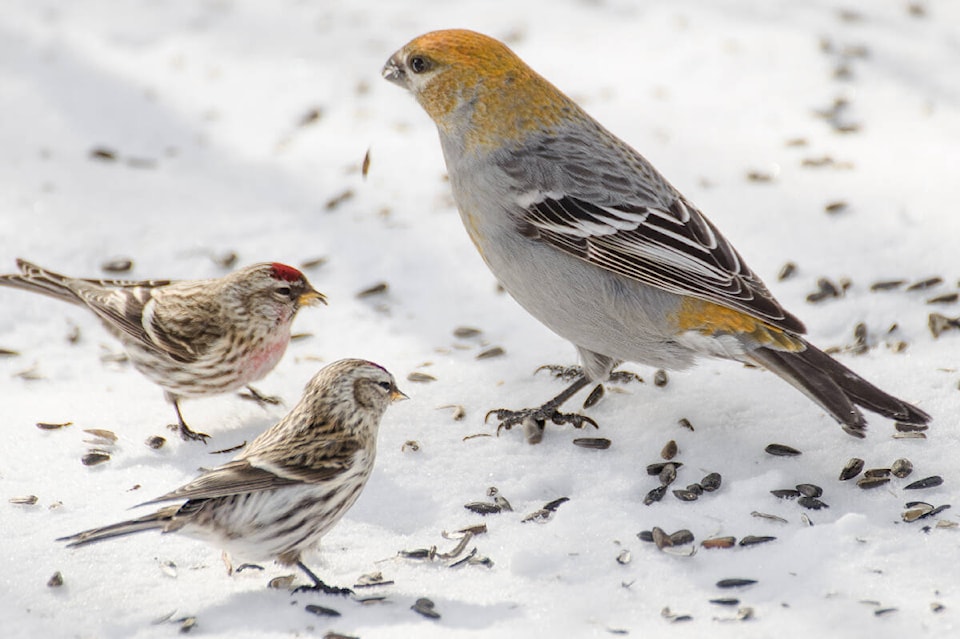Now that winter is here and hopefully the bears have gone to bed, it is time to put the feeders out for our resident winter birds if you have not already done so.
I am frequently asked what seed should be put out. Without a doubt, black oil sunflower seed is the best and is very nutritious. Although you can buy sunflower seed that has already been shelled, it is cheaper to buy seed still in the shell. Niger (thistle) seed is also popular, but hard to find and expensive.
Chickadees (all species), red-breasted nuthatches, siskins, and redpolls, purple finches, grosbeaks, and crossbills all know instinctively how to extract the seed from its shell.
Watching chickadees and nuthatches, you might think that they are exceedingly greedy, but, in fact, they are not immediately eating all the seeds that they take from the feeder. Rather they are stashing some of them for future repasts by wedging them into the bark of trees.
How they remember where they put them all is a mystery, but they do seem to eat most of them.
It used to be that downy and hairy woodpeckers, as well as flickers just came for the fat or suet, but in more recent years they have learned, probably from watching the chickadees, how to remove the shell by taking the seed to the nearest tree, wedging it into the bark and then pecking at it hard enough to break the shell. Recently we have been seeing the Steller’s jays (and the deer) eating the black oil seeds also.
I do not recommend buying ‘bird seed mixes’ that have a lot of millet seeds (small round yellowish seeds) because most winter hardy birds do not favour them, so the seed is wasted. However, dark-eyed juncos and sparrows will eat the millet.
When the migrant sparrows arrive in the spring more of the mixes with millet will be eaten.
Many of the birds love fat, suet, and peanut butter.
However, suet and peanut butter should not be left out if the temperature is above freezing. This is because they both go soft very quickly above zero. Then the bird’s beaks get all sticky.
When the birds preen, their feathers get greasy and lose some of their insulation and waterproofing which can be disastrous.
It is important to distinguish between fat and suet. Fat is the solid stuff that does not melt but gets stickier at temperatures above freezing whereas suet melts if heated. Suet is often sold powdered and frozen. Both suet and peanut butter mixed with cereals tend to be less sticky, but I am always careful not to use it if the temperature goes much above zero.
If you want to see flying squirrels, put some peanut butter out smeared on a paper towel roll and hang it from a branch (but only if it is below zero).
After dark, the nocturnal flying squirrels will come down from the coniferous trees to feed and just adore peanut butter. Quietly shine a flashlight on the feeder to see them, but make sure the cats are shut in the house as cats are a major predator of flying squirrels.
thom.barker@blackpress.ca
Like us on Facebook and follow us on Twitter
